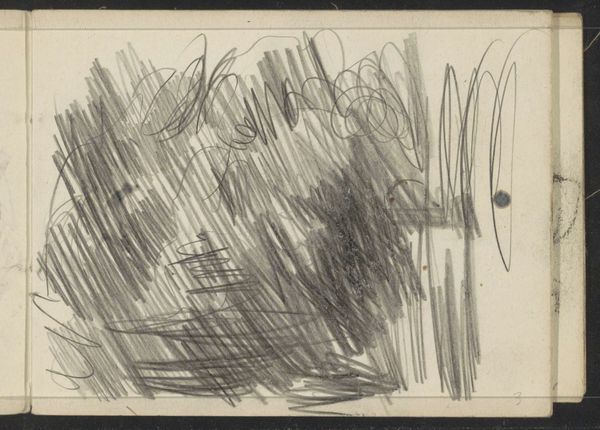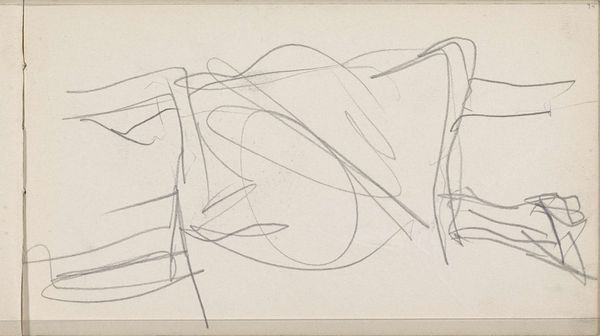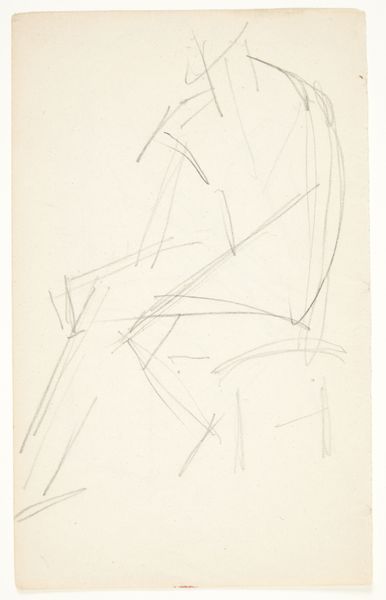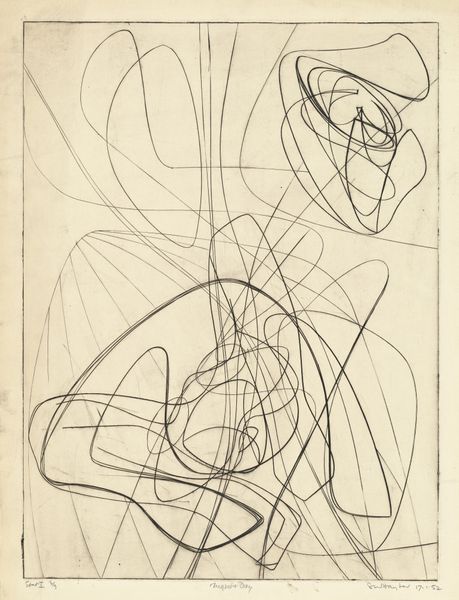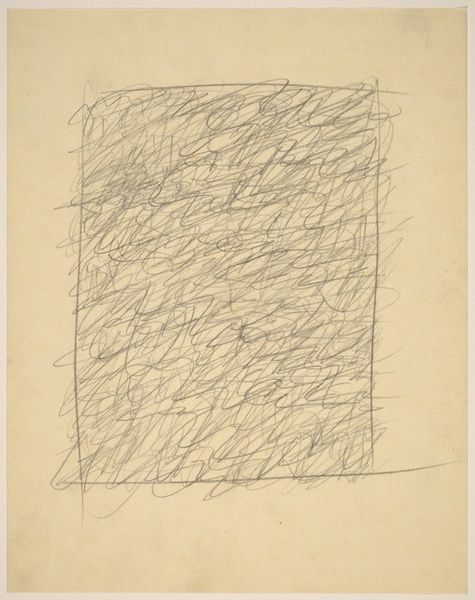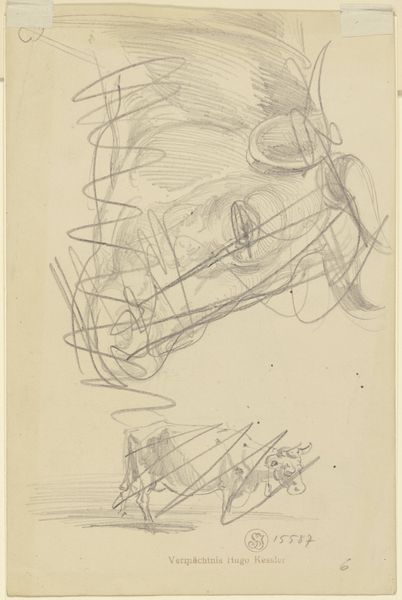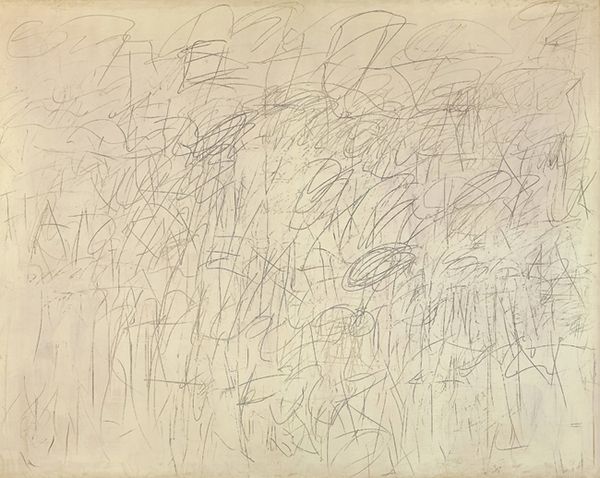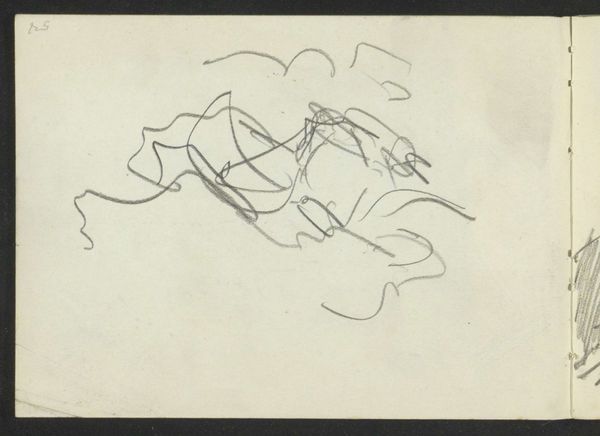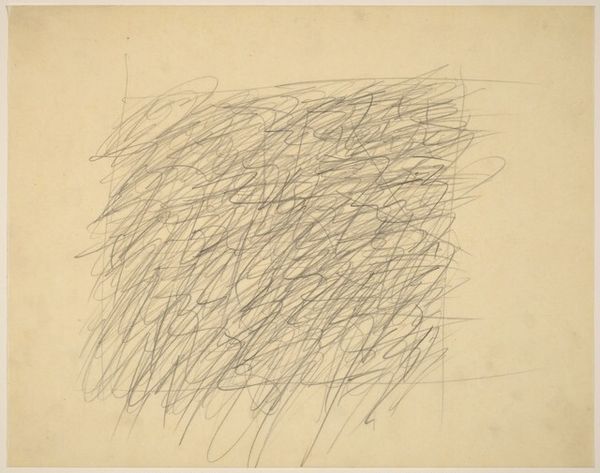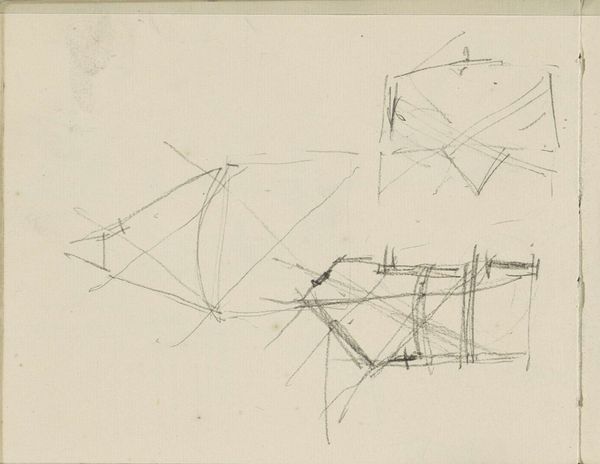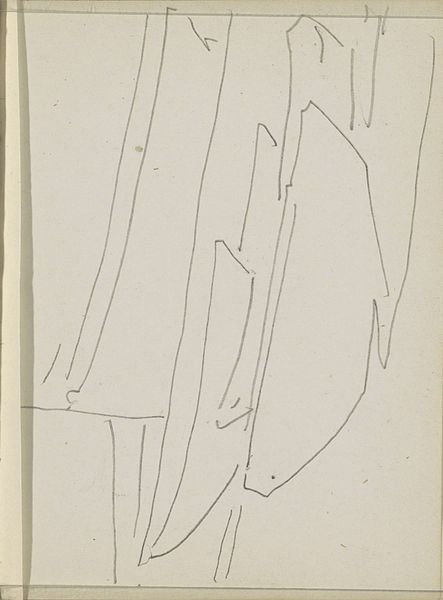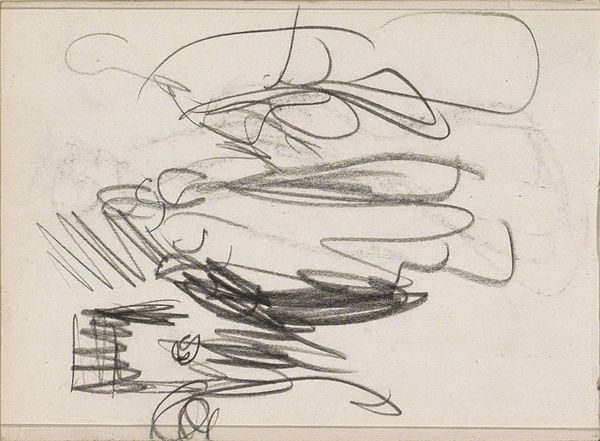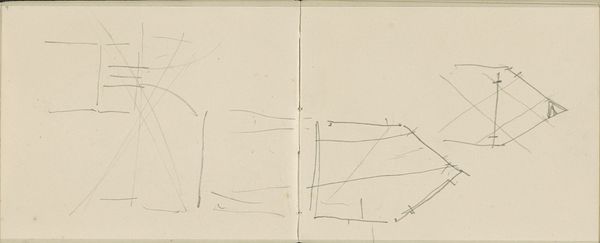
drawing, paper, pencil, graphite
#
drawing
#
paper
#
pencil
#
abstraction
#
line
#
graphite
Copyright: Rijks Museum: Open Domain
Curator: This graphite and pencil drawing, rendered on paper, is titled "Onregelmatige lijnen," or "Irregular Lines," created around 1905 by Carel Adolph Lion Cachet, and held at the Rijksmuseum. It's rather unassuming, wouldn't you agree? Editor: My first impression is chaotic, yet curiously calm. There is an undeniable tension between its haphazard appearance and the almost meditative quality of the muted grey lines dancing across the page. What do you think Cachet was attempting? Curator: That's interesting; the "dance" of lines captures its essence. Formally speaking, observe how the irregular lines interplay, creating a dynamic yet ultimately self-contained composition. Cachet's choice to eschew representation is pivotal. This allows us to focus purely on line, weight, and the subtle gradations of graphite. Editor: Precisely. Considering its date of creation around 1905, it's fair to consider how these "irregular lines" challenge conventional aesthetics during a period of intense social upheaval and avant-garde experimentation. To me, it screams resistance—an artist dismantling accepted conventions through abstraction, reflecting on the world’s own destabilization and a quest for new modes of expression. It reminds me of discourses around female hysteria at the time, the kind of graphic representation of chaotic emotion shown in medical textbooks— Curator: I understand your interest in external narratives, but consider the interplay of line as the sole generator of meaning here, moving away from all contextual narrative. See the variations in pressure that articulate space, suggesting depth? Cachet compels us to engage with the intrinsic visual language itself, independent of any overt reference points. It isn't necessary to impose societal meaning when considering how these seemingly arbitrary lines reveal an underlying order. Editor: But is such detached analysis truly sufficient? By situating it historically, we gain access to its revolutionary essence; that it refuses to perpetuate the traditional status quo, not only through visual presentation, but implicitly making commentary on political or gendered representation. Can't this resistance also serve as a visual metaphor for marginalized communities' struggles for recognition? Curator: I concede that the historical setting provides enriching context, but insist on giving equal weight to understanding the artistic elements independently from these references. I suggest viewers appreciate the work’s equilibrium first. Editor: Agreed. Perhaps the most compelling way forward involves viewing it as both, an independent entity, and through its socio-political-historical moment. Hopefully, the listener might engage in this dialogue on their own!
Comments
No comments
Be the first to comment and join the conversation on the ultimate creative platform.
